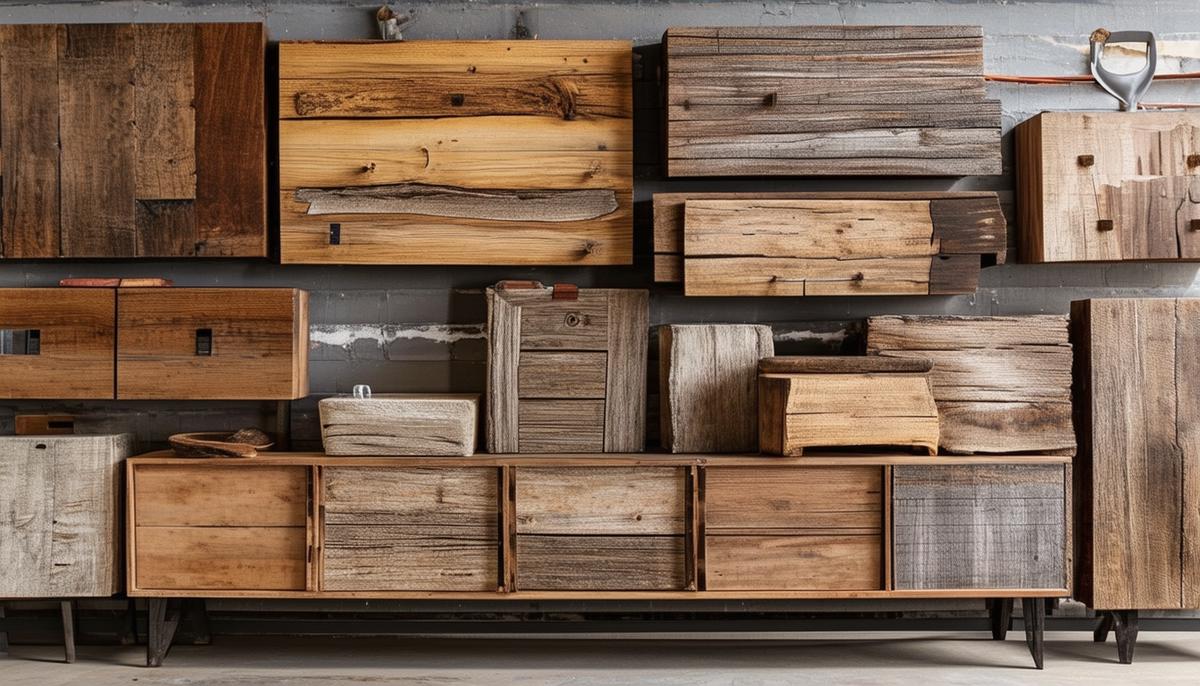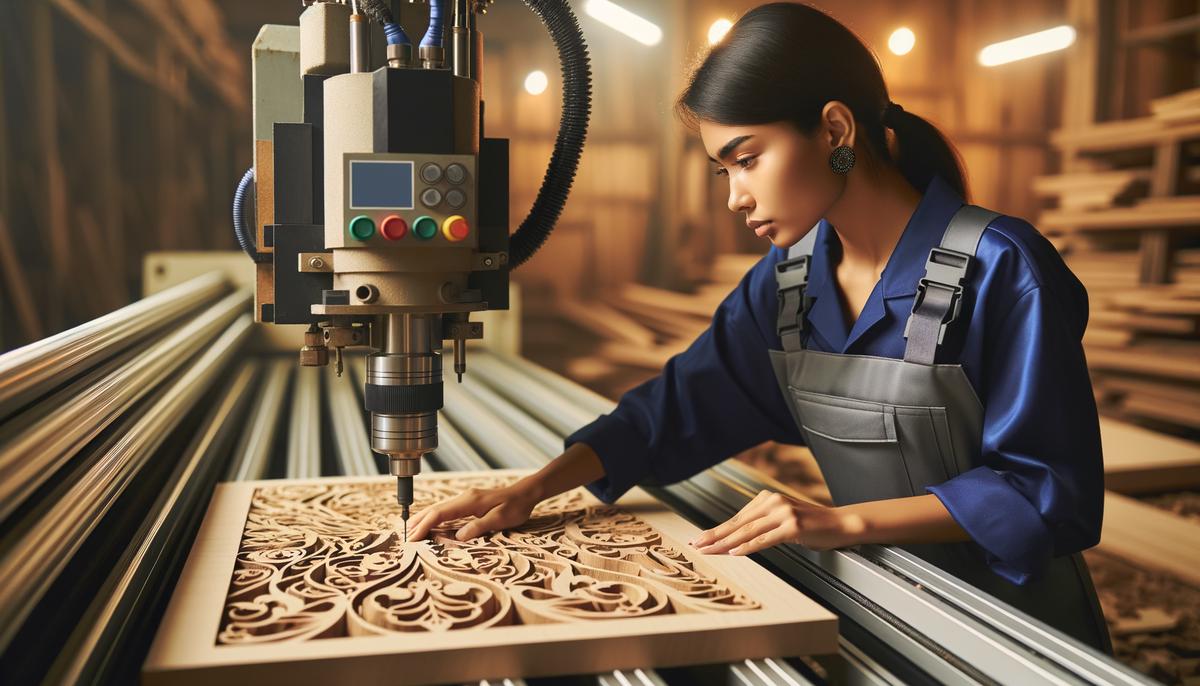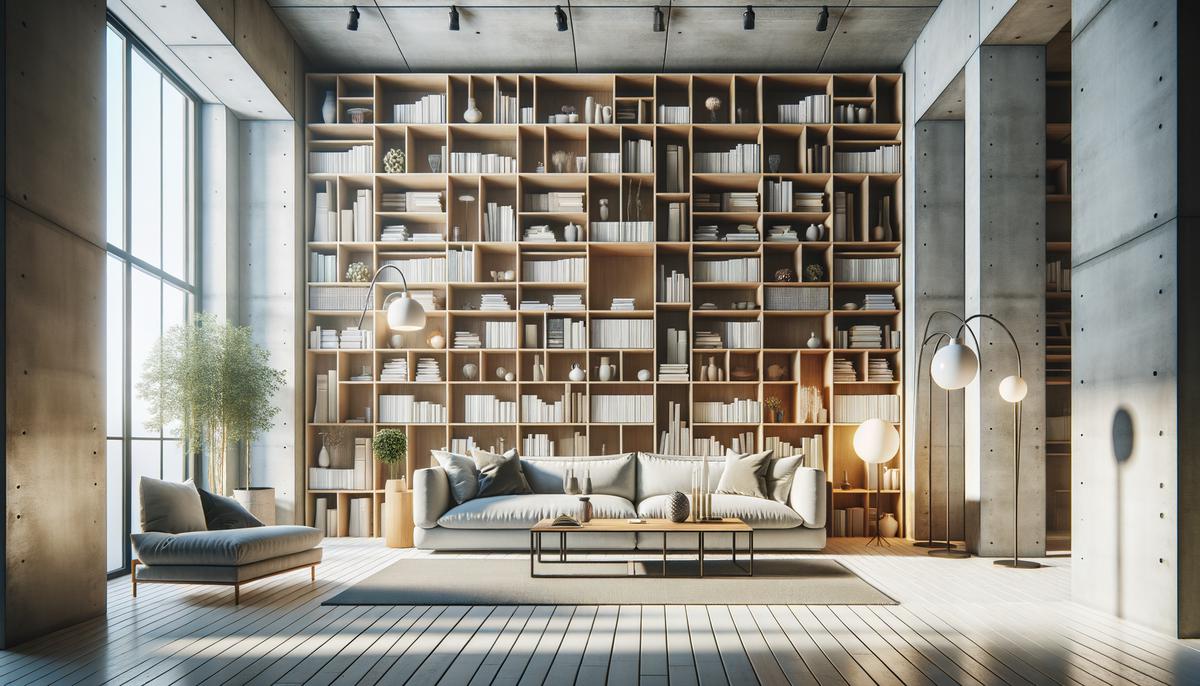Sustainable Materials in Carpentry
Increasingly, carpenters choose reclaimed wood, FSC-certified lumber, and other environmentally friendly materials. This evolution not only lessens the environmental impact but also addresses growing consumer demand for sustainability.
Reclaimed Wood
Reclaimed wood has a history, and its unique, aged appearance can lend any project a distinctive look. Plus, using reclaimed wood prevents it from ending up in landfills, turning waste into something beautiful and functional.
FSC-Certified Lumber
The Forest Stewardship Council (FSC) ensures that the wood comes from responsibly managed forests, maintaining the forest's biodiversity, productivity, and ecological processes. Consumers can be reassured that their new furniture didn't contribute to illegal logging or forest destruction.
Bamboo and Other Rapidly Renewable Materials
Bamboo, often dubbed the "green steel" for its strength and eco-friendliness, grows astonishingly fast. It's versatile, being used in everything from flooring to cabinetry. Similarly, materials like cork and hemp grow quickly and are biodegradable, making them fantastic alternatives to traditional woods.
Low VOC Finishes
Traditional finishes can release harmful chemicals into the air, affecting indoor air quality. Low VOC (Volatile Organic Compounds) finishes minimize these emissions, benefiting both the carpenter and homeowners.
Green Building Practices
Green building practices encompass efficient design, energy-saving techniques, and waste reduction. This can mean designing pieces to last longer, using energy-efficient tools, or recycling scraps.
Consumer Demand for Sustainability
Consumers today want to know where their products come from and their impact on the planet. This demand drives carpenters to adopt sustainable practices. When buyers choose sustainable products, they support eco-friendly practices and encourage more businesses to make greener choices.

Integration of Technology in Carpentry
Advanced digital tools such as CNC machines, 3D printing, and sophisticated software like Building Information Modeling (BIM) and Construction Management Software (CMS) are transforming the carpentry craft into a modern marvel of precision and efficiency.
CNC Machines
Computer Numerical Control (CNC) machines automate cutting, drilling, and shaping wood with pinpoint accuracy and consistency using pre-programmed computer software.
3D Printing
3D printing allows the creation of complex, custom designs, pushing the boundaries of creativity. Carpenters can experiment with new shapes, materials, and structures, broadening the scope of their craft.
Building Information Modeling (BIM)
BIM technology facilitates the creation of detailed digital models of buildings, aiding in planning, designing, and managing construction projects more effectively. Statistics show a 60-70% adoption rate among construction professionals[1], highlighting BIM's importance in minimizing errors and improving collaboration.
Construction Management Software (CMS)
Platforms like Autodesk's AutoCAD and BIM 360 enable efficient project management by providing a centralized place to store and access data, blueprints, and important documents, streamlining task and schedule organization.
Smart Technology
Smart woodworking solutions like furniture with integrated wireless charging and hidden touch-sensitive storage compartments add a layer of innovation, enhancing functionality and catering to modern consumer desires for convenience and sophistication.
Incorporating technology doesn't mean abandoning traditional techniques; rather, it's about enhancing them with new, finely tuned instruments for greater precision, efficiency, and creativity.

Custom Built-Ins and Modular Designs
Homeowners seek personalized and adaptable spaces, fueling the popularity of custom built-ins and modular designs. Custom built-ins like bookshelves and cabinetry offer unique storage solutions that blend with a home's architecture. Multifunctional furniture, such as benches with hidden storage or Murphy beds, cater to the need for efficiency in modern homes.
Modular designs take personalization and adaptability further, with prefabricated components that can be combined in various configurations, allowing homeowners to adapt their furniture to changing needs or tastes. Urban living conditions amplify the need for these innovations, as solutions like modular furniture and custom built-ins become indispensable for maximizing space and creating dynamic living environments.
Consumer preference for multifunctional furniture is evidenced by market trends and data, reflecting a broader shift towards sustainable and thoughtful consumption. By seamlessly integrating custom built-ins and modular designs, carpenters can meet evolving demands, providing unique, multifunctional spaces that maximize efficiency without sacrificing style.

Biophilic Design Elements
Biophilic design emphasizes the connection between indoor spaces and the natural world, promoting tranquility and well-being. Homeowners and designers gravitate towards biophilic elements that bring the soothing aspects of nature into living spaces.
The use of natural materials like wood and stone adds warmth and texture, creating a genuine connection to the outside world. Maximizing natural light through large windows enhances mood and well-being, reducing the need for artificial lighting and creating healthier living spaces.
Incorporating plant life into carpentry projects is also gaining popularity, enhancing air quality and introducing a refreshing aesthetic. Picture a custom-built shelf designed for potted plants or a vertical garden integrated into a wall unit.
Biophilic design values the use of rich wood tones, creating a timeless appeal and highlighting the natural beauty of plants and stones. Water features and natural acoustics, like indoor fountains or water walls, create a soothing auditory and visual experience.
This holistic approach extends to furniture, with utilitarian yet organic pieces like wooden dining tables with live edges or stone-topped coffee tables echoing the raw beauty of the natural world.
Biophilic design principles align closely with sustainable practices, using reclaimed wood and other eco-friendly materials. This ensures that the aesthetic and functional benefits do not come at the expense of the planet's health.
By embracing biophilic design, modern carpentry crafts living spaces that promote peace, wellness, and a deep connection to nature, fostering a lifestyle that appreciates and incorporates the inherent benefits of nature into daily living.

- Yalcinkaya M, Singh V. Patterns and trends in Building Information Modeling (BIM) research: A Latent Semantic Analysis. Autom Constr. 2015;59:68-80.
Leave a Reply